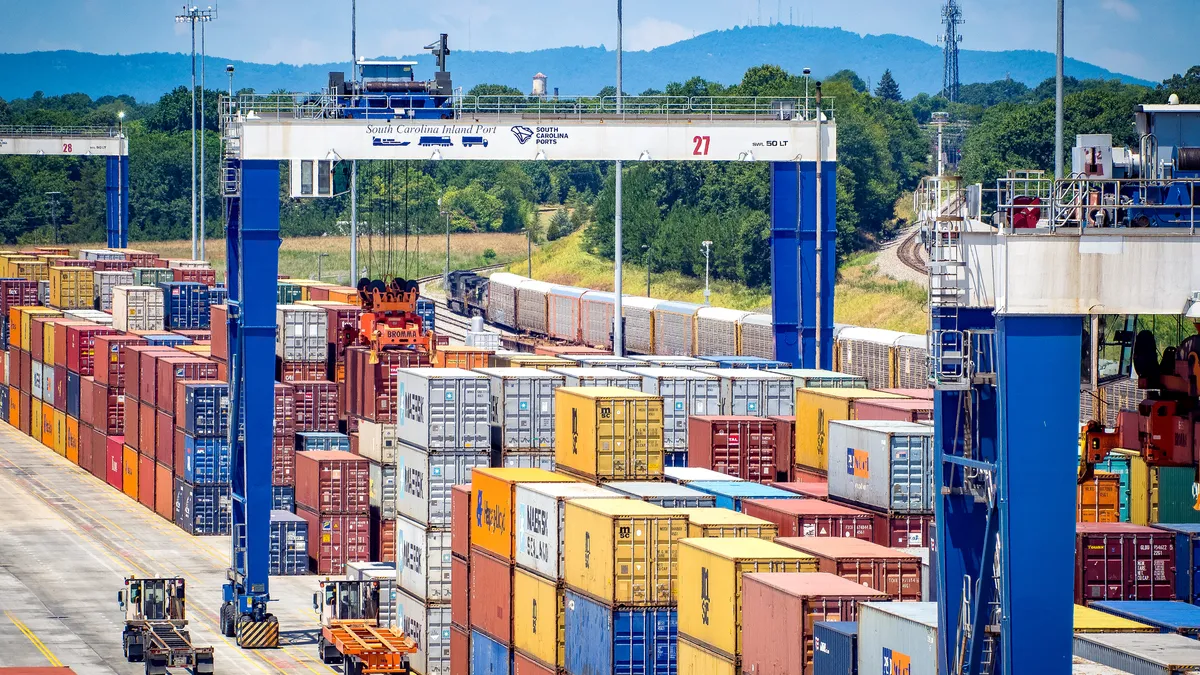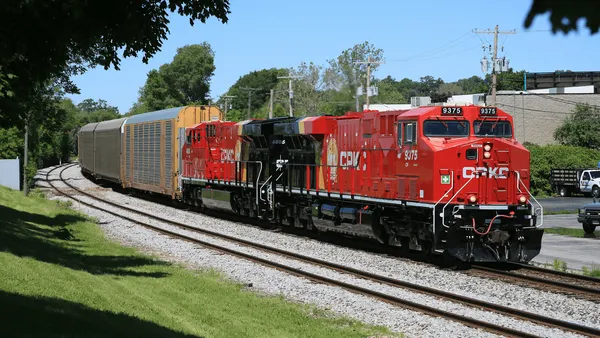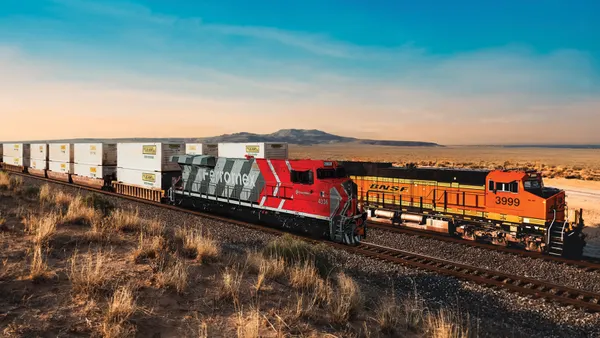Dive Brief:
- Intermodal volumes increased 20.4% YoY in Q2, according to the Intermodal Association of North America, the largest quarterly gain since 2010 as consumer demand surged and trucking rates stayed elevated.
- U.S. container volume growth was strongest in the West, which the association said was due "to less trucking competition in the region and an overwhelming amount of imports flowing into West Coast ports and being transloaded."
- "The trucking rates have increased so significantly that it's giving an advantage for the intermodal shipments," said Jeff Trombly, a professor of supply chain management at the University of Tennessee, Knoxville, adding that shippers "are under the gun to get things moved" ahead of peak season.
Dive Insight:
Increases in consumer demand have led intermodal volumes to surge beyond even their 2019 levels. Q2 volumes were 6% higher than the same period in 2019, according to IANA data, and have more than recovered from the sharp economic downturn caused by the early stages of the COVID-19 pandemic.
Much of the shipping activity is going to trucking services, but prices are still higher than normal for that mode of transport. Money spent on truck shipments reached a record high in Q2, with tight capacity and climbing fuel prices playing a factor, according to the U.S. Bank Freight Payment Index.
"Intermodal [rail] remains highly competitive with trucking due to very high rates and tight driver supply," the association's quarterly report said. "This situation will likely continue at least into early 2022, however, could be affected by a quicker stabilization in the trucking market, as reflected by a peak in truck spot metrics."
Railroads are benefiting from these conditions. They handled a surge in intermodal shipments in 2020, fueled in part by long-haul trucking constraints and large retailers diversifying their carrier mix, according to a report published by the Northwestern University Transportation Center.
Intermodal growth is expected to be solid for the remainder of 2021, according to the association, and networks are becoming clogged with rising volumes.
Schneider's intermodal customers saw their average unload dwell times increase 70% from the 2019 comparable period, President and CEO Mark Rourke said on the company's earnings call last week. The company aims to add up to 3,000 containers by year's end.
Demand for J.B. Hunt's intermodal services is outpacing capacity, "which remains constrained by rail performance and restrictions in addition to customer detention of our trailing equipment," said Darren Field, executive vice president of intermodal at J.B. Hunt, on the company's most recent earnings call.
"The challenges with capacity on intermodal are going to be an issue, but it seems like the trucking challenges are even higher," said Gerard Burke, chair of the Department of Logistics and Supply Chain Management at Georgia Southern University. "Historically, intermodal has been kind of an overflow mode for shippers when trucking capacity becomes really tight, so I think that's going to continue to be the case."














